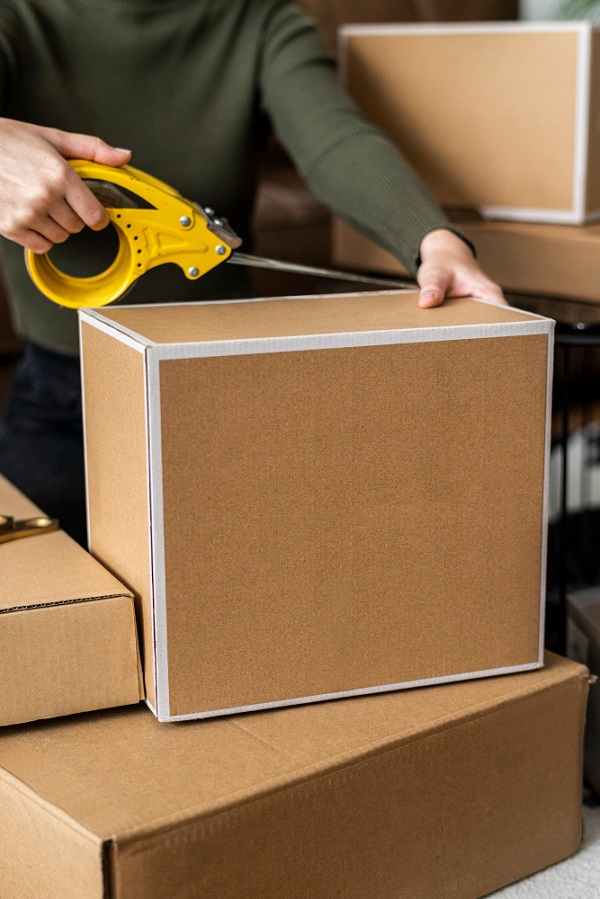Packing Tips from the Pros: How to Prepare for a Stress-Free Move

Moving can be a stressful experience, especially when it comes to packing. Proper preparation and packing techniques can make the process smoother and ensure your belongings arrive at your new home safely. To help with your move, here are some expert packing tips that will save time, reduce stress, and keep your items secure throughout the journey.
1. Start Early and Create a Plan
One of the most common mistakes people make is leaving packing until the last minute. One of the most common mistakes people make is leaving packing until the last minute. Begin at least a few weeks in advance, starting with items you don’t use daily. If you’re feeling overwhelmed, consider hiring professionals like Get Removals to assist with the packing process. Create a packing plan that outlines which rooms or categories you’ll tackle first. Having a timeline ensures you stay on track, reducing the likelihood of a rushed, chaotic moving day.
2.Declutter Before You Pack
Before you start packing, go through your belongings and decide what you truly need. Moving is the perfect time to declutter and get rid of items that no longer serve a purpose. Sort items into categories: keep, donate, sell, and recycle. This step will save you space and reduce the number of boxes, making the overall process more efficient.
3. Gather Quality Packing Supplies
Using proper packing materials is crucial for protecting your items. Invest in quality boxes, bubble wrap, packing paper, and tape. Sturdy boxes prevent crushing, while bubble wrap and packing paper safeguard fragile items. Ensure you have various box sizes to accommodate different types of belongings, and don’t forget to get labels and markers for easy organization.
4. Pack Room by Room
Packing systematically, one room at a time, is a proven way to stay organized. Start with the least-used rooms and gradually move to the more frequently used ones. Packing room by room will help keep related items together and make unpacking easier. Label each box with the room it belongs to and a brief description of its contents, such as “Kitchen – pots and pans.” This method will also assist movers in placing boxes in the right areas of your new home.
5. Use the Right Size Boxes
Packing items in appropriately sized boxes is key to a successful move. Heavy items, such as books, should be packed in smaller boxes, while lighter items, like linens and pillows, can go in larger ones. Overloading large boxes with heavy items can make them difficult to lift and more prone to breaking, so distributing weight evenly across all boxes is essential.
6. Wrap Fragile Items Properly
For delicate items, take extra care to prevent damage during transport. Wrap glassware, dishes, and other breakables in bubble wrap or packing paper. Consider using dish packs, which are specially designed boxes with dividers that add an extra layer of protection. Place heavier items at the bottom of the box and lighter, more fragile items on top. Always fill empty spaces with packing peanuts or crumpled paper to prevent shifting.
7. Label Boxes Clearly
Clear labeling will make unpacking much easier. Label boxes with the room they belong to, a general description of their contents, and if they contain fragile items. For example, “Living Room – Books – Fragile.” If you have a lot of boxes, consider color-coding labels for different rooms. This simple step will make it easier for you and your movers to place boxes where they belong in the new house.
8. Pack an Essentials Box
On moving day, you’ll likely need immediate access to certain items. Prepare an essentials box with things like toiletries, a change of clothes, basic kitchenware, medications, and important documents. Keep this box with you, rather than in the moving truck, so you can easily access what you need without rummaging through multiple boxes.
9. Disassemble Furniture and Keep Hardware Safe
If you’re moving larger furniture, disassemble it beforehand to make it easier to transport. Remove legs from tables, detach headboards, and take apart shelving units. Place screws, bolts, and other small parts in labeled plastic bags and tape them to the respective furniture piece. This approach ensures you won’t lose any essential components during the move.
Packing doesn’t have to be a stressful experience. With the right preparation, you can turn a potentially chaotic situation into a smooth and successful relocation.










